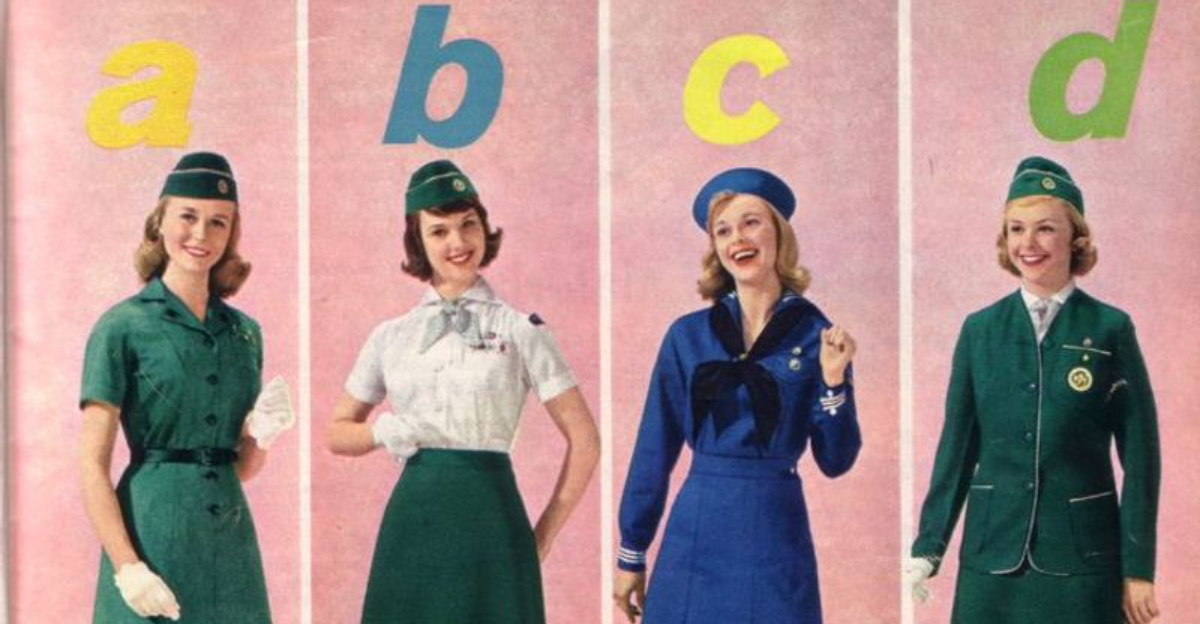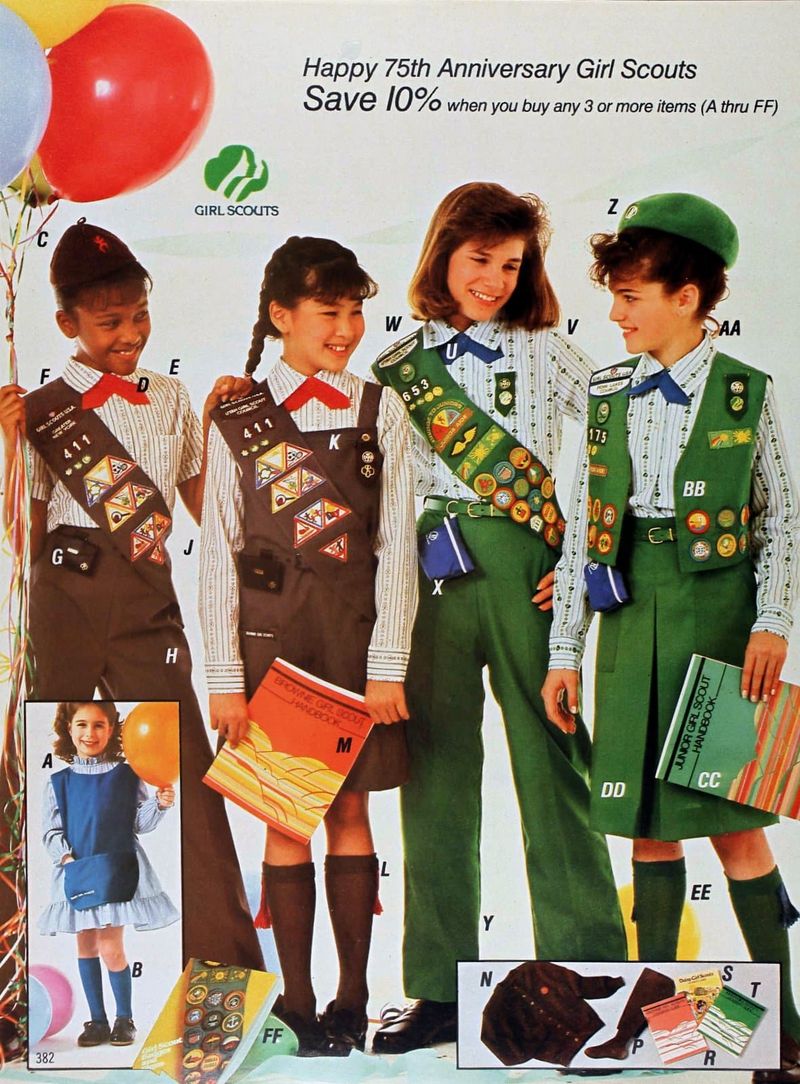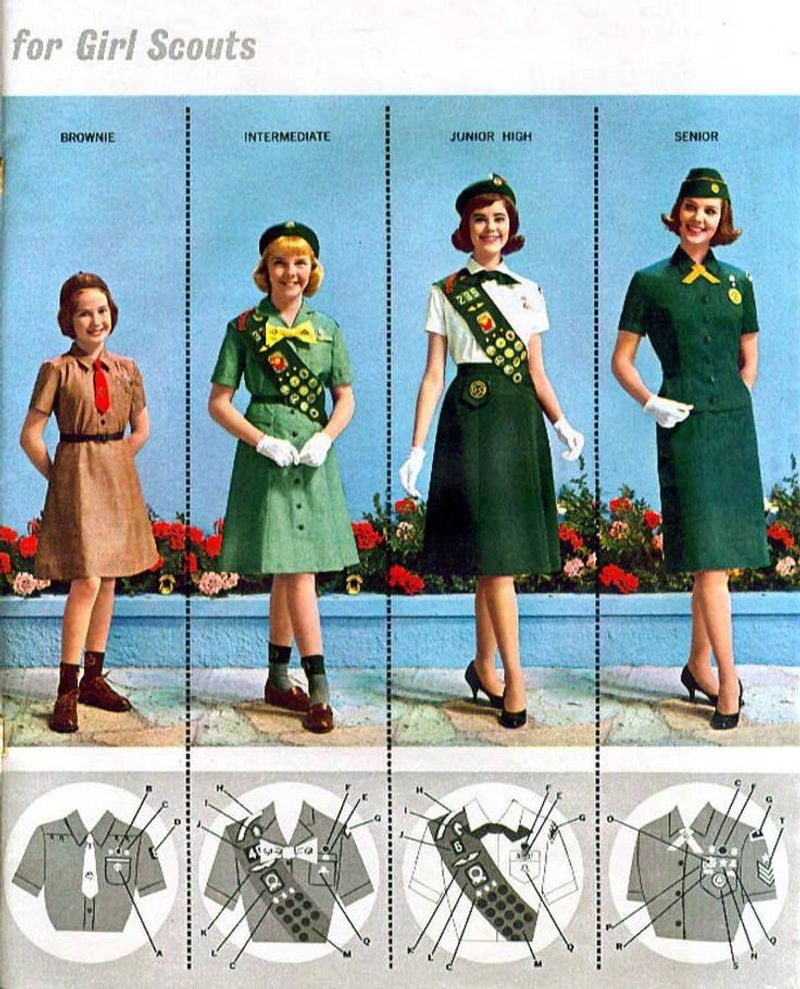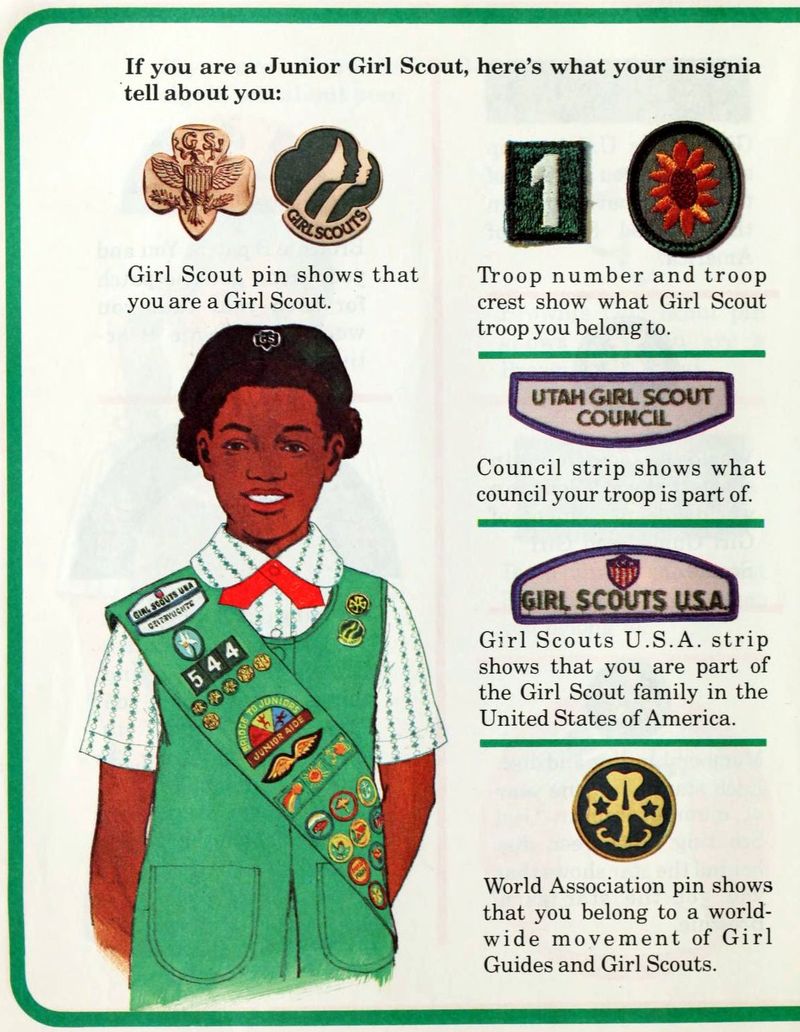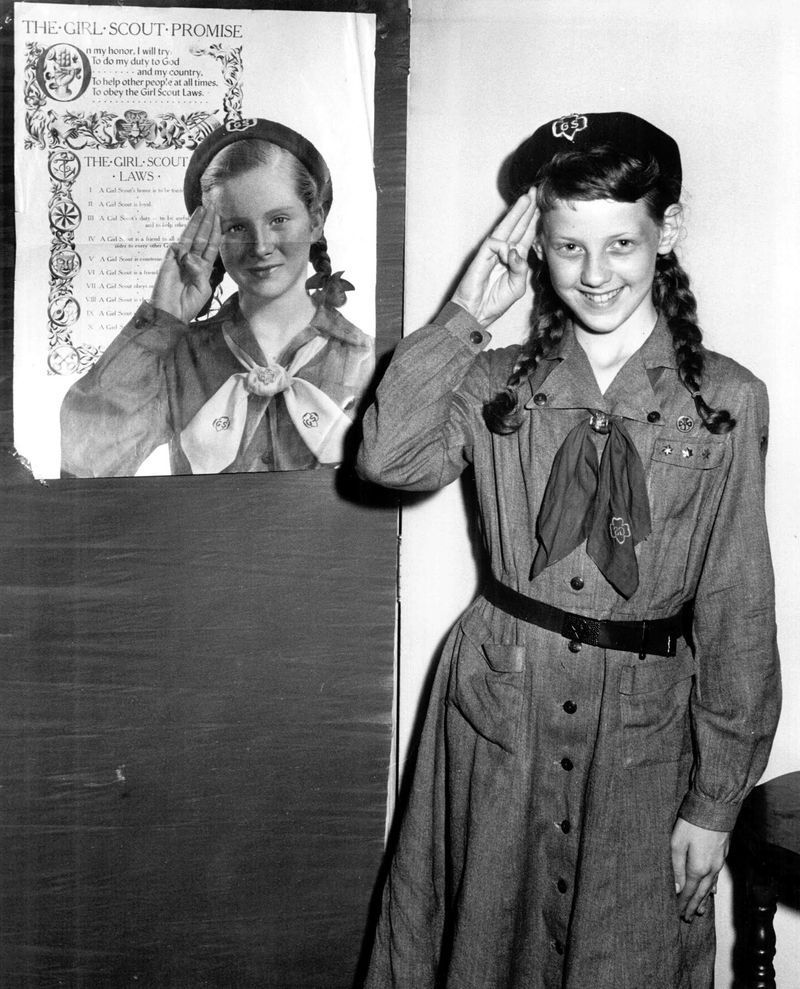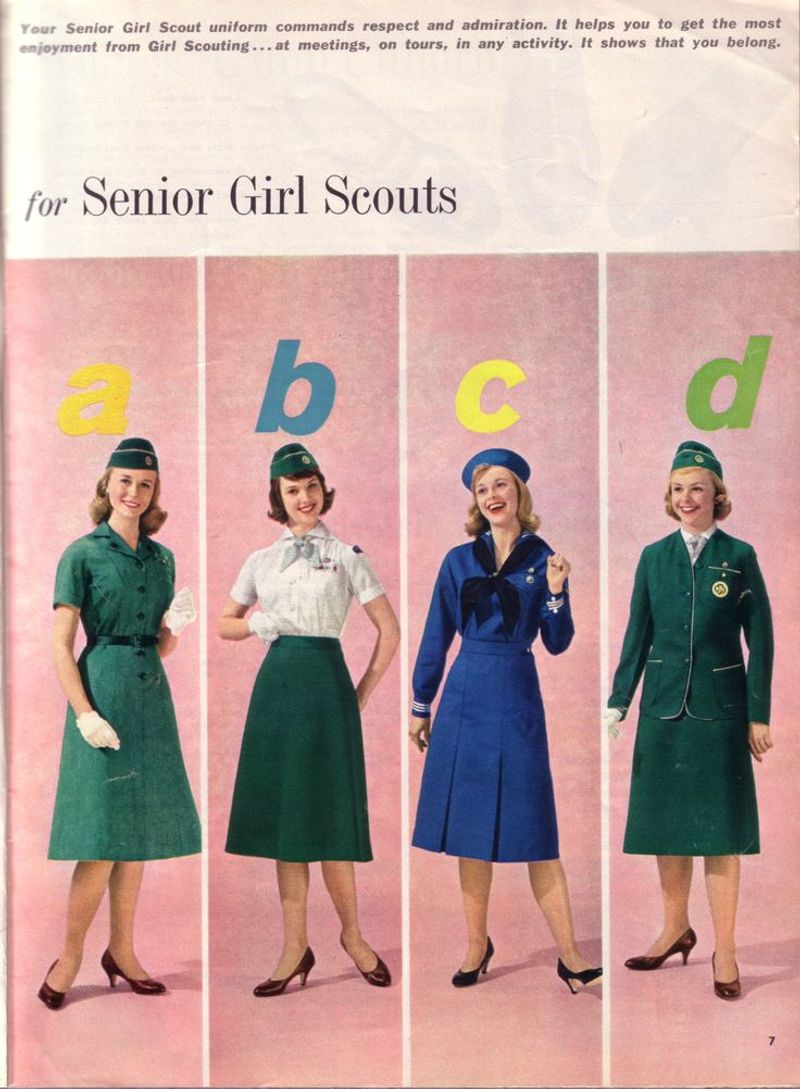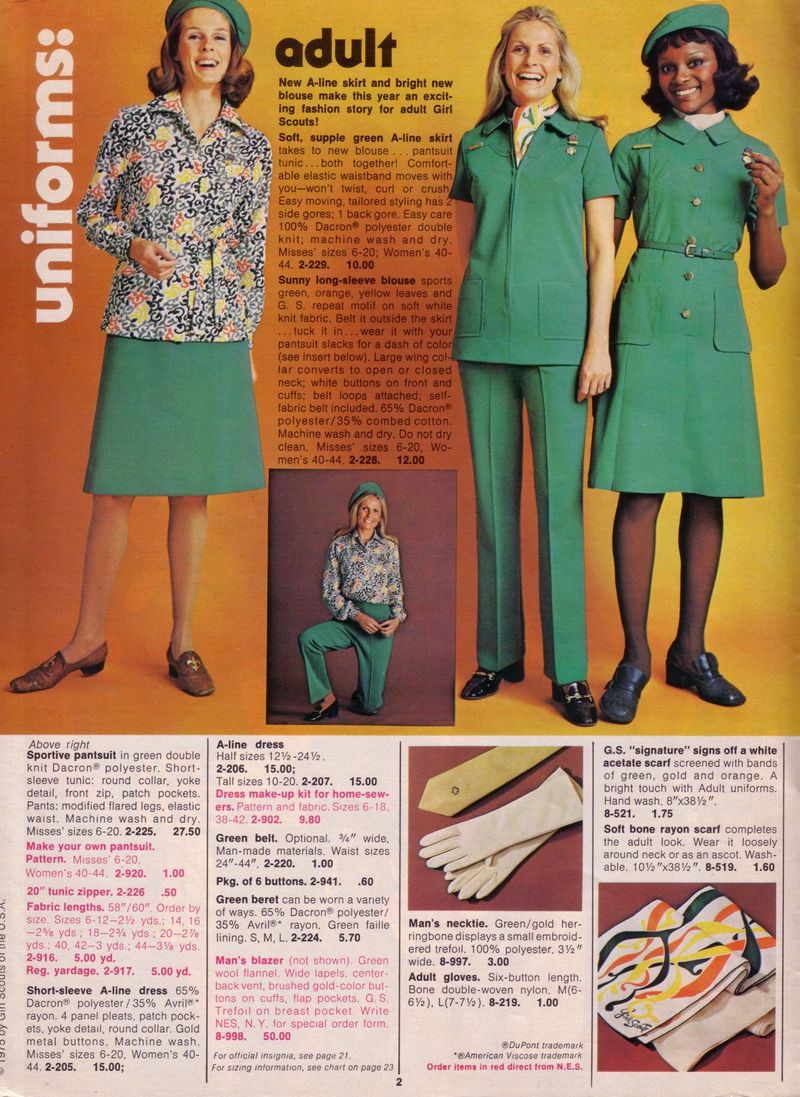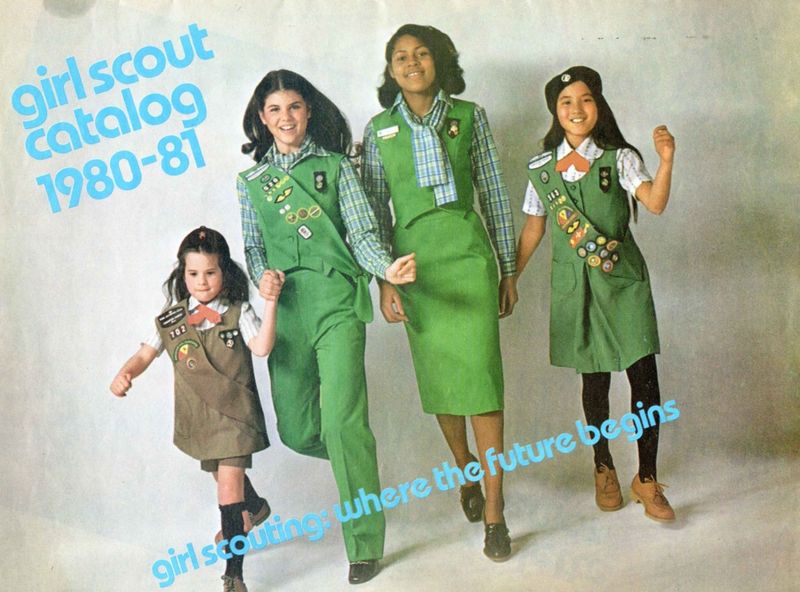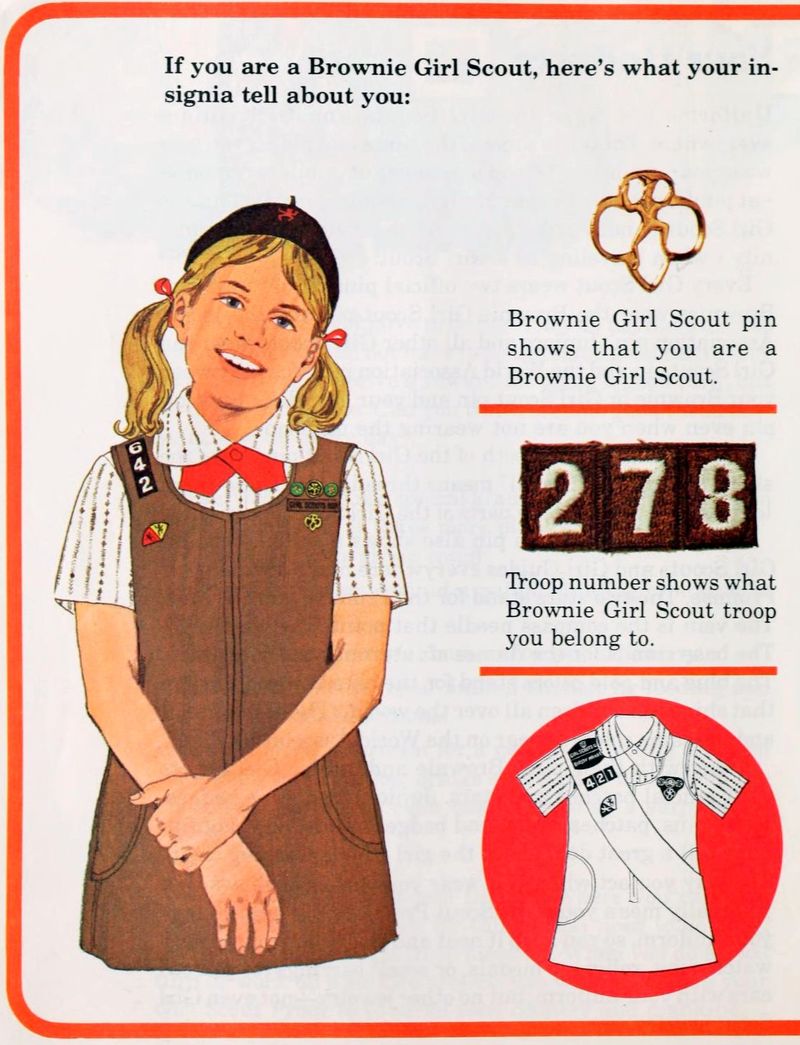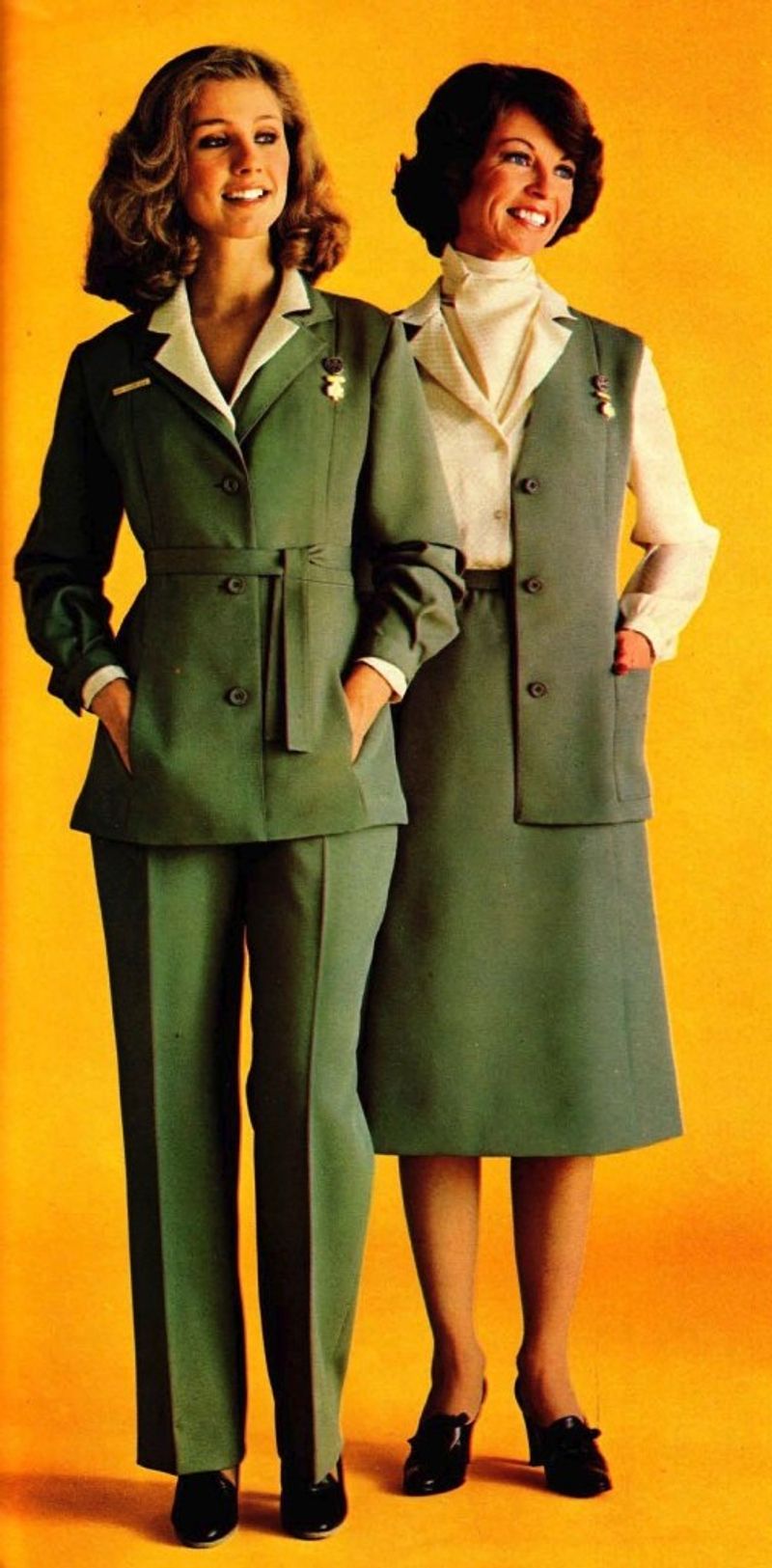From their inception in the early 20th century, Girl Scout uniforms have mirrored the evolving roles and aspirations of young women in society. Each iteration not only reflects the fashion sensibilities of its time but also embodies the values and unity of the Girl Scout movement. Here’s a look at ten iconic uniforms that have left a lasting impression.
1. The Original Khaki Ensemble (1910s)
With its khaki skirt and blouse, the Original Khaki Ensemble was the quintessential uniform for Girl Scouts in the 1910s. Designed for practicality, the uniform featured a simple black tie and was tailored to withstand the outdoor adventures that defined early scouting. Its earthy tones represented the girl’s connection with nature and readiness for exploration. The uniform became a symbol of equality, promoting the idea that girls could be just as hands-on and adventurous as their male counterparts. The design choice echoed the era’s shift towards more practical clothing for women.
2. Green Dresses with Black Hats (1920s)
Marking a vibrant shift in scouting attire, the 1920s introduced green dresses paired with chic black hats. This change mirrored the decade’s fashion trends while establishing green as the iconic color of the Girl Scouts. The uniform’s sophisticated appearance resonated with the era’s growing emphasis on style and elegance. As the organization expanded, the green uniform became synonymous with the camaraderie and shared identity of scouts worldwide. The ensemble was both stylish and functional, allowing girls to participate in various activities while looking sharp and put-together.
3. Camp Romper Suits (1930s)
The 1930s brought about an ingenious solution for active Scouts: the romper suit. These one-piece outfits, designed for camp activities, offered unparalleled freedom of movement, a nod to the more active lifestyle encouraged during this time. The romper, often seen in a cheerful array of colors, was lightweight and easy to wear, perfect for climbing, hiking, and all sorts of outdoor fun. This era’s uniform demonstrated the organization’s commitment to combining practicality with playful style, ensuring girls could fully engage in their scouting adventures with ease and flair.
4. Mainbocher-Inspired Attire (1940s)
During the 1940s, the Girl Scouts’ uniform took inspiration from Mainbocher’s designs, echoing the tailored looks worn by Navy WAVES. This attire reflected the wartime ethos, emphasizing discipline and service. The uniform featured neat lines and a crisp appearance, symbolizing the strength and resilience expected of young women during challenging times. It was a period when scouting promoted not just community service but also national service, aligning its values with those of the country. This uniform became a representation of the scouts’ crucial role in supporting home front efforts.
5. Casual Green Skirts and White Blouses (1950s)
The post-war 1950s introduced a more relaxed uniform consisting of green skirts paired with crisp white blouses. Topped with an overseas cap, this outfit balanced traditional scouting values with the era’s burgeoning casual fashion trends. The ensemble was not just about style; it symbolized a return to normalcy and stability after the war. This period’s uniform allowed the scouts to engage in community activities with a sense of sophistication and ease, promoting the timeless values of the Girl Scouts while embracing modernity.
6. Berets and Shorter Hemlines (1960s)
The 1960s brought a fresh, youthful update to the Girl Scout uniform, featuring berets, ties, and notably shorter hemlines. This modern attire reflected the decade’s spirit of change and innovation, aligning with the fashion-forward trends of the era. The uniform’s lively and dynamic design captured the essence of a generation eager for progress and self-expression. It was not only about looking chic but also about embodying the youthful energy that defined the Girl Scouts’ mission during a time of significant social transformation.
7. Introduction of Pantsuits (1970s)
Reflecting societal shifts towards gender equality, the 1970s saw the introduction of pantsuits into the Girl Scout wardrobe. This option offered practicality and modernity, aligning with the fashion of contemporary women seeking more equal footing with their male peers. The pantsuit was emblematic of empowerment and progress, enabling scouts to participate in a broader range of activities without compromising style or comfort. It was a symbol of breaking traditional norms and embracing a future where young women could confidently express themselves and their abilities.
8. Mix-and-Match Ensembles (1980s)
The 1980s introduced an era of flexibility with mix-and-match uniforms, offering scouts the opportunity to personalize their attire while maintaining a cohesive look. This new approach allowed girls to express individuality through varied combinations of skirts, blouses, and accessories. The standardized elements ensured unity, while the customizable options reflected an era increasingly focused on personal expression. This blend of tradition and innovation was perfect for girls exploring their identities, fostering creativity within the structure of the scouting community.
9. Brownie Uniforms with Accessories (1983)
In 1983, Brownie uniforms evolved to include charming dresses complemented by coordinating accessories like sashes and hats. This uniform update aimed to instill a sense of identity and pride among younger scouts. The colorful sashes, adorned with badges, marked achievements and milestones, encouraging the girls to engage actively in their communities. This playful yet structured attire helped Brownies feel part of something larger, fostering a sense of belonging and teamwork from an early age. It emphasized the importance of community involvement and personal growth.
10. Adult Leader Uniforms (1985)
Recognizing the vital contributions of adult volunteers, the mid-1980s introduced official uniforms for leaders. These outfits promoted unity and professionalism within the organization, highlighting the importance of guidance and mentorship. The uniform’s design was both authoritative and approachable, reflecting the dual roles leaders played as mentors and role models. This development underscored the organization’s commitment to fostering leadership skills not only in scouts but in those who guided them, creating a cohesive and supportive environment for growth and learning.
